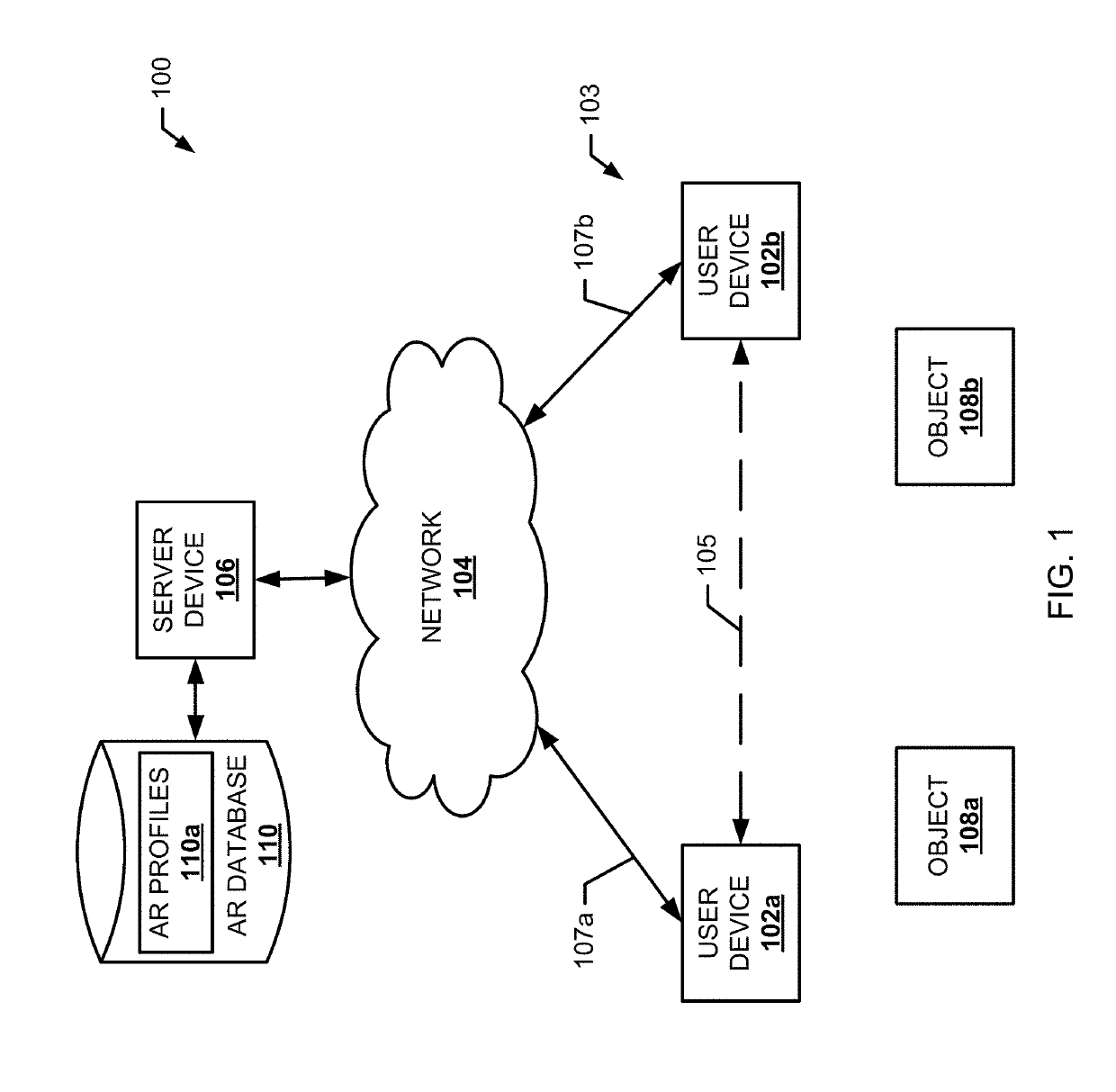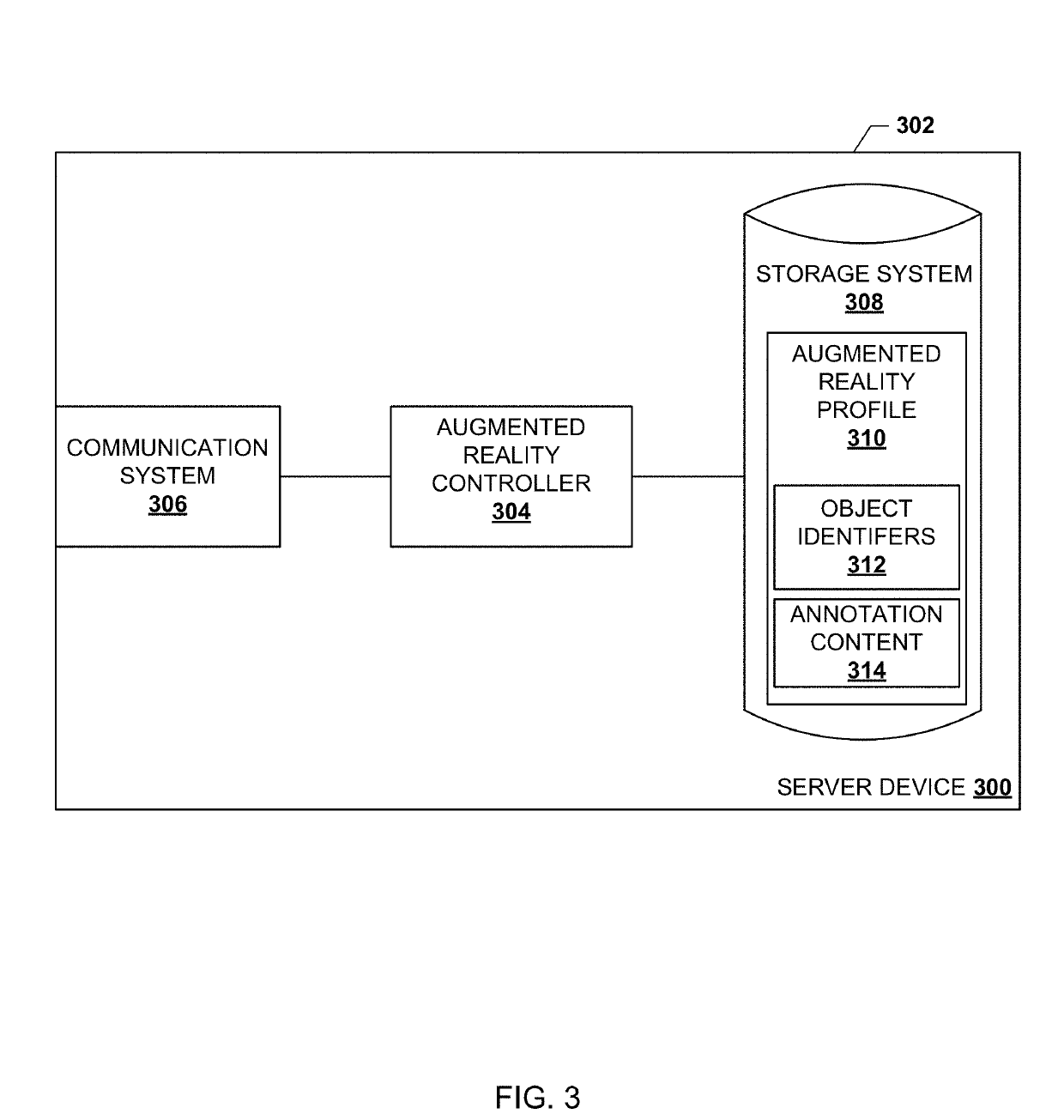Collaborative augmented reality system
a collaborative, augmented reality technology, applied in the field of collaborative augmented reality, can solve the problems of computationally expensive augmented reality, achieve the effects of saving mobile data usage, improving efficiency, and reducing end-to-end latency
- Summary
- Abstract
- Description
- Claims
- Application Information
AI Technical Summary
Benefits of technology
Problems solved by technology
Method used
Image
Examples
Embodiment Construction
[0021]Embodiments of the present disclosure include collaborative augmented reality systems and methods that may be used, for example, to share between user devices results of processes performed by a server device. As discussed above, existing augmented reality systems mainly focus on solitary environments and neglect the potential opportunities brought by the collaboration and interaction of their users. The present disclosure proposes Collaborative Augmented Reality for Socialization (CARS), a framework that enables the social nature of human beings for improving user-perceived Quality of Experience (QoE). As augmented reality ties closely to the physical world, its users seeing overlapped scenes are likely to be in the vicinity of each other, which allows collaboration and interaction among them. CARS takes advantage of this unique feature of augmented reality to support intelligent sharing of information between nearby users via local (e.g., peer-to-peer, device-to-device) comm...
PUM
 Login to View More
Login to View More Abstract
Description
Claims
Application Information
 Login to View More
Login to View More - R&D
- Intellectual Property
- Life Sciences
- Materials
- Tech Scout
- Unparalleled Data Quality
- Higher Quality Content
- 60% Fewer Hallucinations
Browse by: Latest US Patents, China's latest patents, Technical Efficacy Thesaurus, Application Domain, Technology Topic, Popular Technical Reports.
© 2025 PatSnap. All rights reserved.Legal|Privacy policy|Modern Slavery Act Transparency Statement|Sitemap|About US| Contact US: help@patsnap.com



